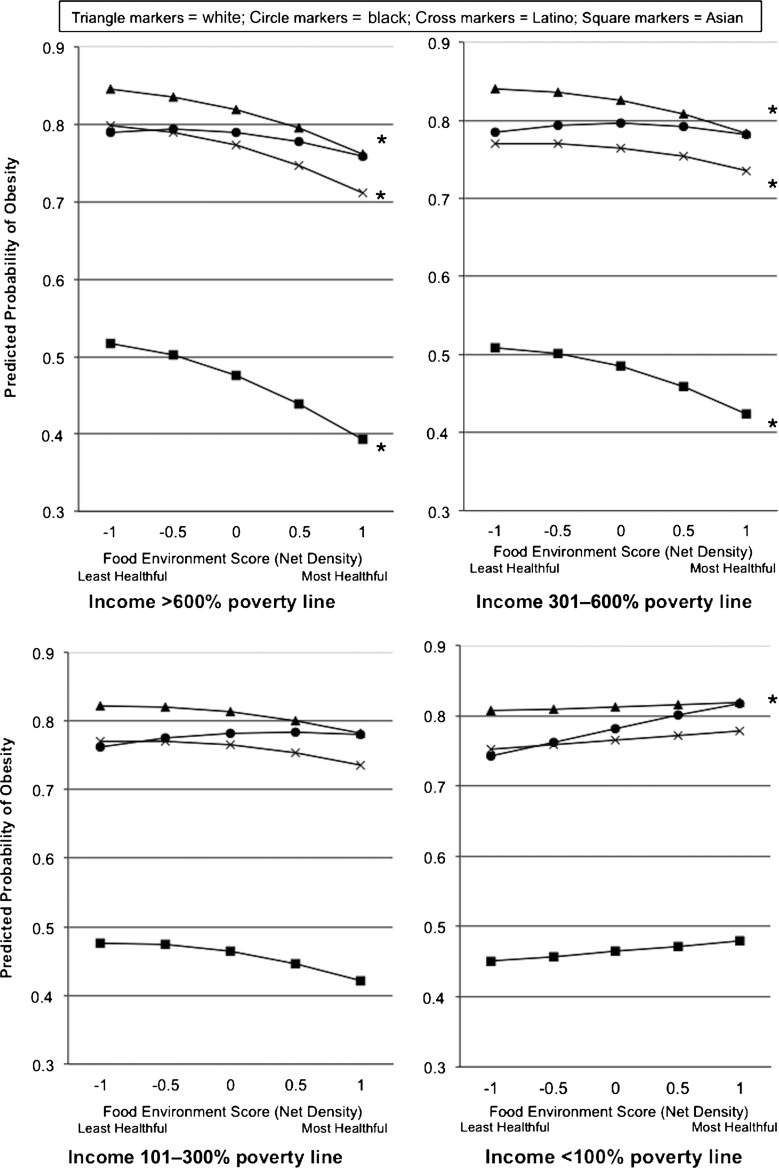Figure 1.
Associations between food environment score and obesity according to income level and race/ethnicity, DISTANCE. *P < 0.05 within each demographic subgroup for the difference in predicted probability when comparing a net kernel density food environment score difference of −1 to +1 (significant differences are seen among whites, Latinos, and Asians with incomes >600% poverty line and incomes 301–600% poverty line and among blacks with incomes <100% poverty line). Food environment score is the kernel density of the unhealthful food vendors subtracted from the kernel density of the healthful food vendors to give the net density of healthful compared with unhealthy food vendors. A positive net density indicates more healthful food than unhealthful food vendor presence near the participant’s home. Predicted probabilities of obesity are calculated from converted coefficients (from odds to probabilities) from the logistic regression of obesity prevalence and food environment score. Models are adjusted for neighborhood deprivation, age, sex, comorbidities, nativity, marital status, and education and include a squared term for age and the food environment variable, main effects and interaction terms between food environment and income, main effects and interaction terms between food environment squared term and income, main effects and interaction terms between food environment and race/ethnicity, and main effects and interaction terms between race/ethnicity and sex. Predicted probabilities display the shape of the relationship between food environments and obesity according to income and race/ethnicity for the entire sample. However, the intercepts will differ based on other variables in the model. The intercepts shown reflect the following characteristics: women with the sample average age and comorbidity levels, with a high school or some college education level, living in the second least-deprived quartile of neighborhood, born in the U.S., and married. Slopes are the same for men, but intercepts are different.

